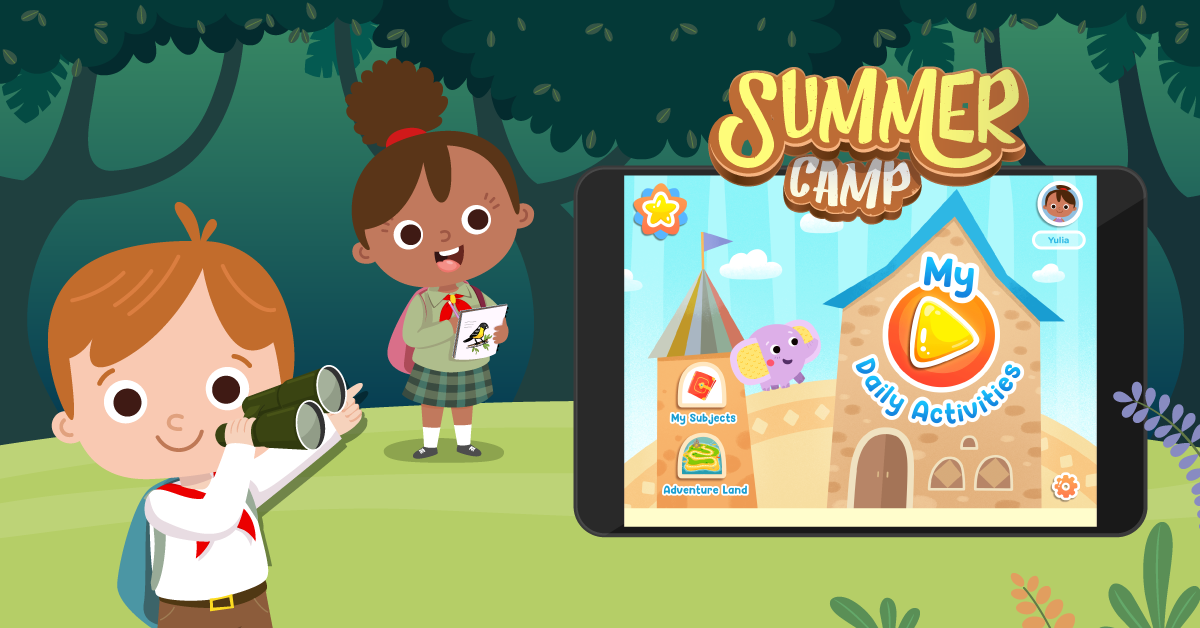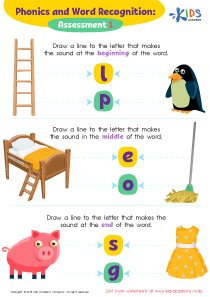Normal Letter Sounds Worksheets for Ages 7-9
7 filtered results
-
From - To
Our "Normal Letter Sounds Worksheets for Ages 7-9" are designed to enhance literacy skills through engaging and educational activities. These worksheets help children recognize and pronounce letter sounds, a crucial step in their reading journey. Tailored specifically for first and second graders, our printable materials provide a variety of exercises including matching sounds to letters, identifying beginning and ending sounds, and filling in missing vowels and consonants. Each worksheet aims to build confidence and proficiency in phonics, setting the stage for successful reading and writing. Ideal for both classroom and homeschool environments, these resources make learning fun and effective.
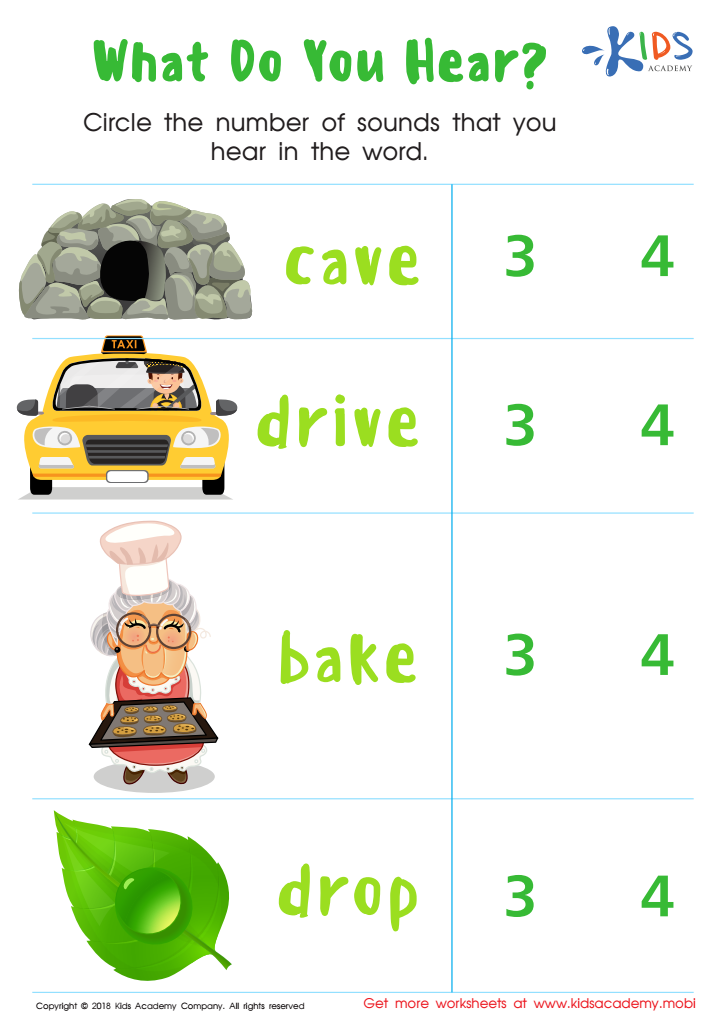

What Do You Hear? Worksheet
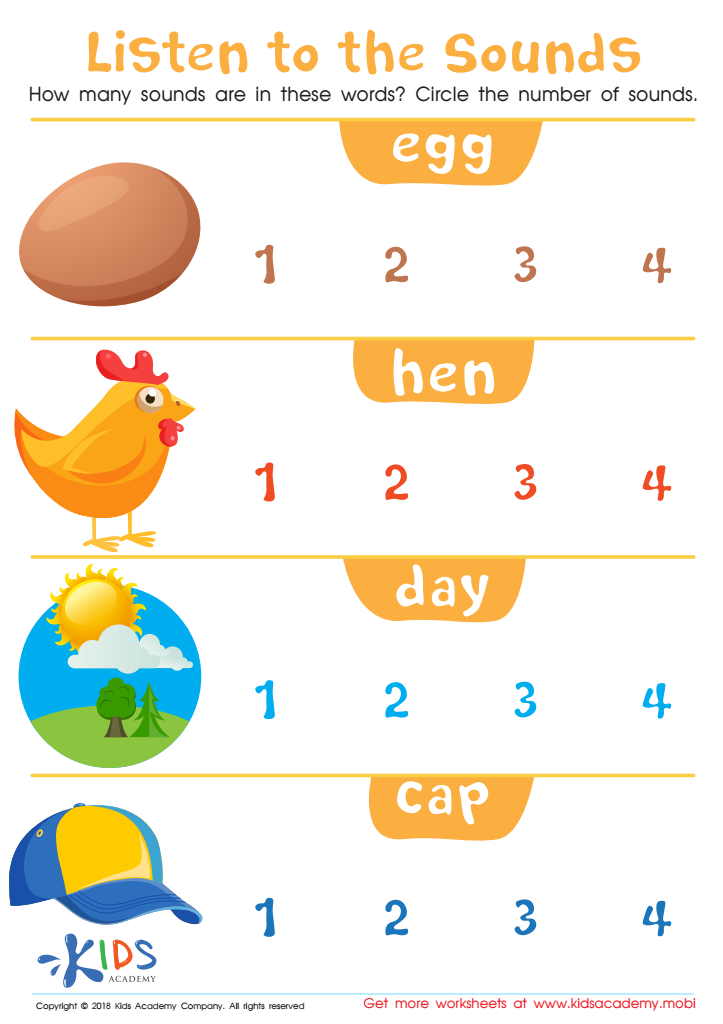

Listen to the Sounds Worksheet
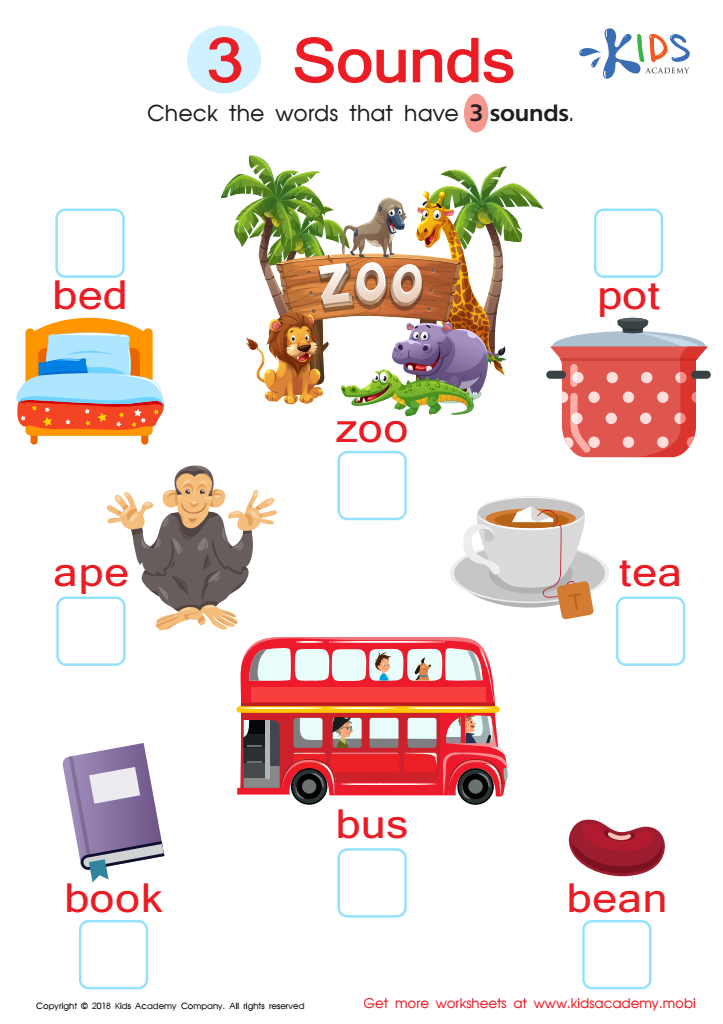

3 Sounds Worksheet
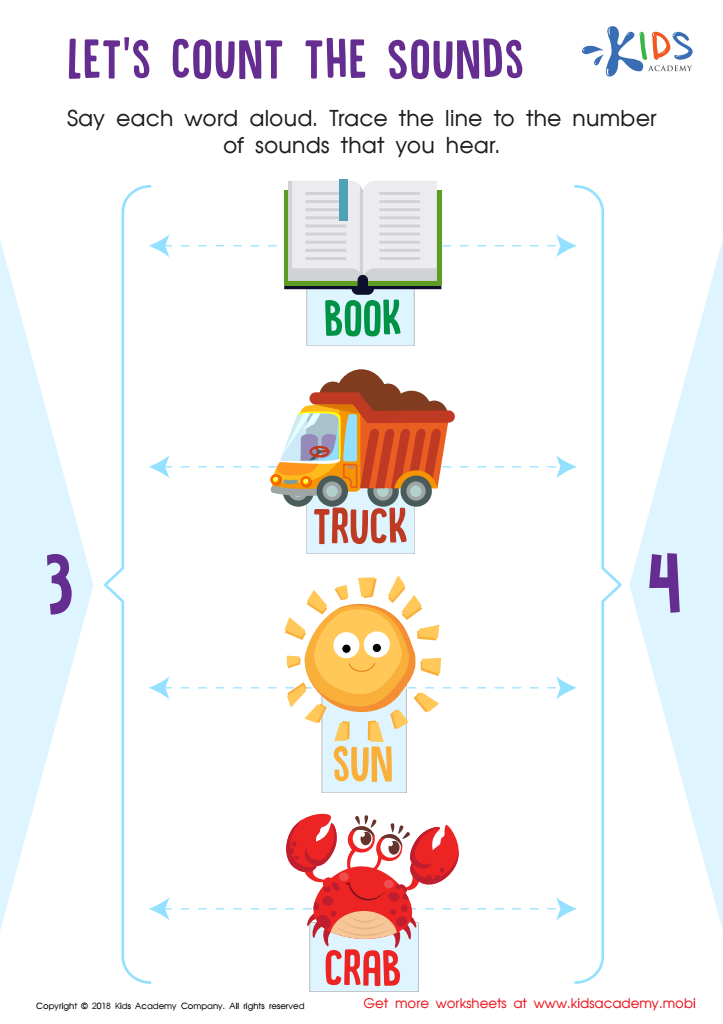

Let's Count the Sounds Worksheet
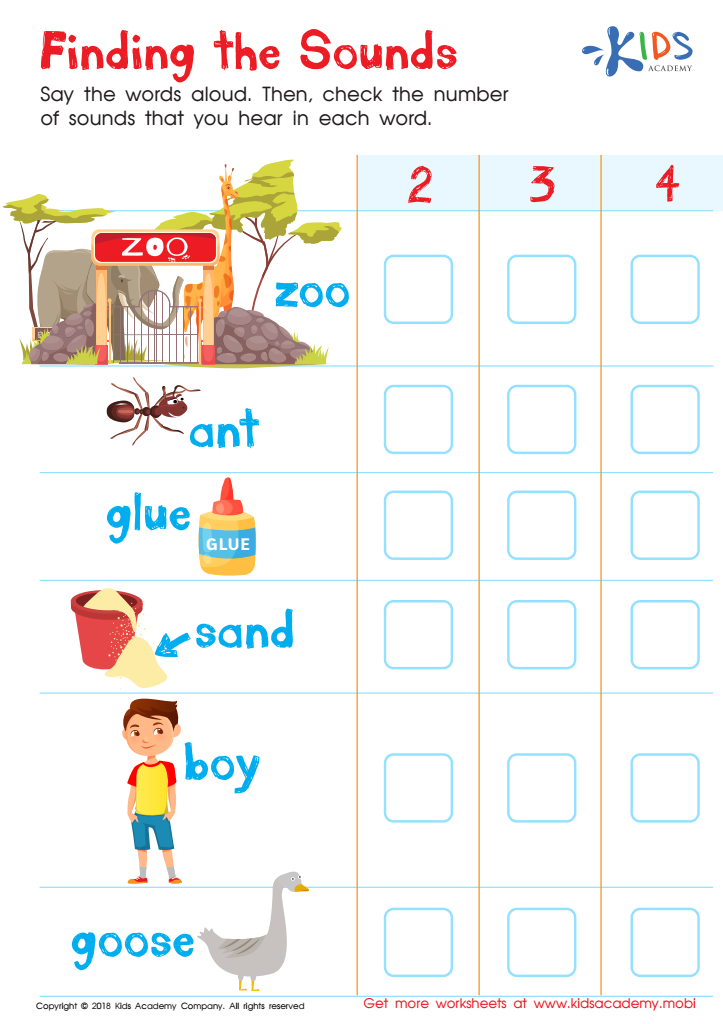

Finding the Sounds Worksheet
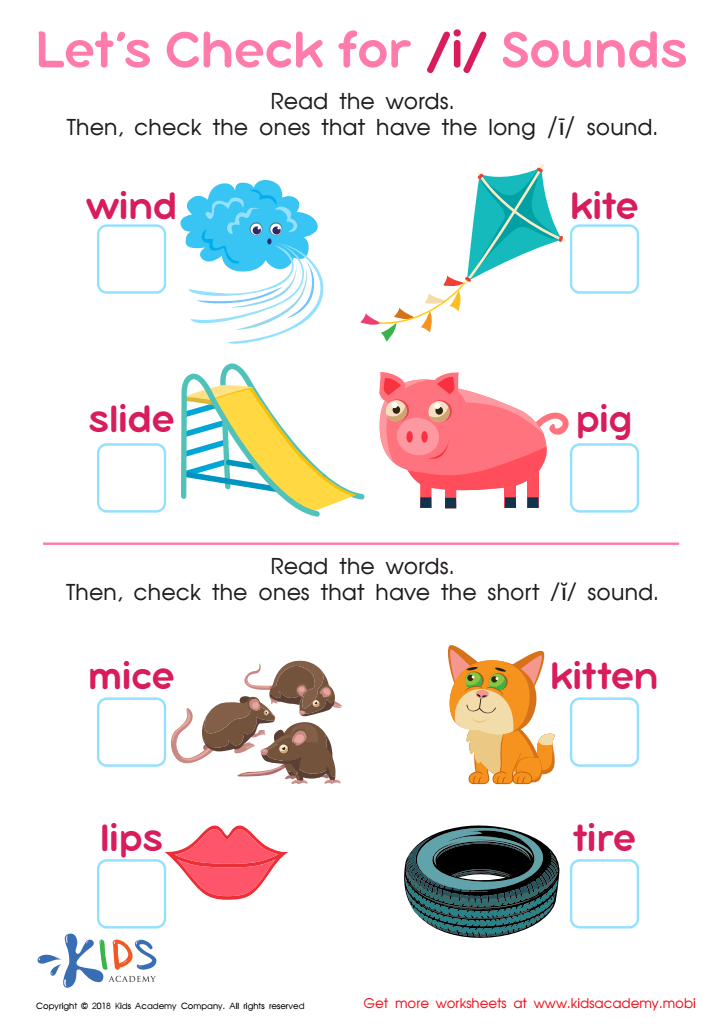

Let's Check for «i» Sounds Worksheet
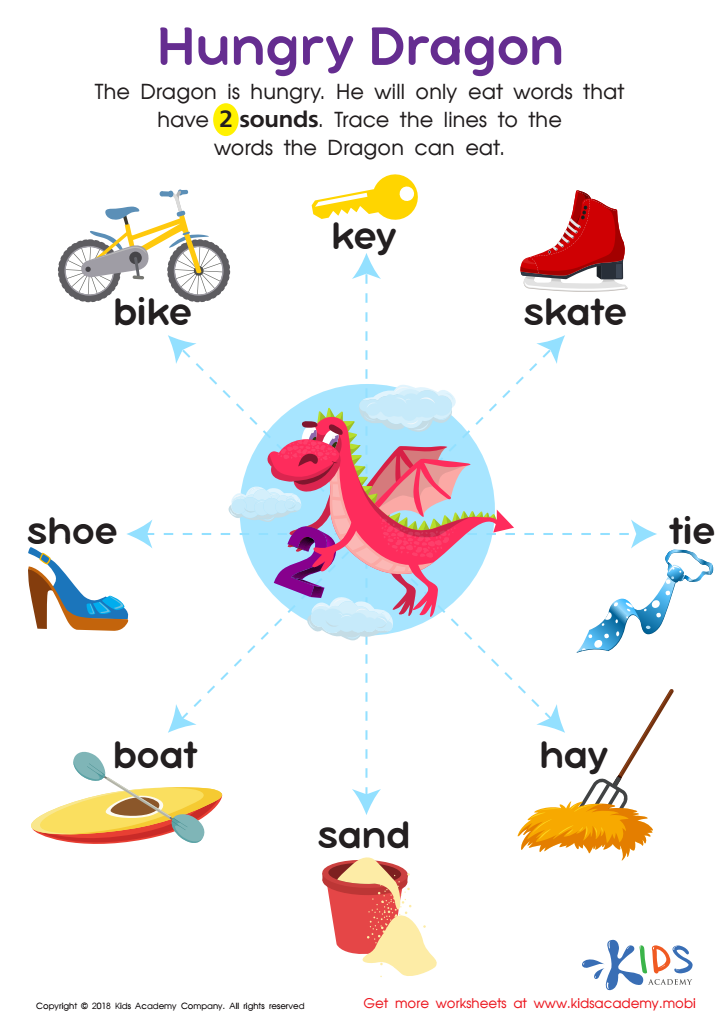

Hungry Dragon Worksheet
Understanding normal letter sounds is crucial for children aged 7-9, a pivotal period for linguistic and cognitive development. At this age, kids transition from "learning to read" to "reading to learn," making proficient phonemic awareness critical. Mastering normal letter sounds enables them to decode new words confidently, fostering fluent reading which is essential for comprehension across all subjects. When this foundation is strong, children can access more complex texts, helping them to stay engaged and excel academically.
Parents and teachers play vital roles in nurturing this development. Early identification of difficulties can prevent future academic struggles and boost a child’s confidence. Practicing normal letter sounds can be embedded in daily activities, making learning feel natural and less intimidating for children. Moreover, this practice helps develop better spelling and writing skills as children learn the connection between sounds and letters.
It's also a vital component of their overall language development, aiding in clear and effective communication. Regular engagement in reading activities strengthens their vocabulary and expressive capabilities. By prioritizing this aspect of learning, parents and teachers help build a solid foundation that supports broader academic goals, lifelong learning, and effective communication skills.

 Assign to the classroom
Assign to the classroom

